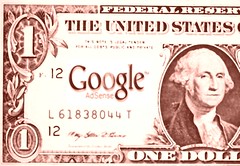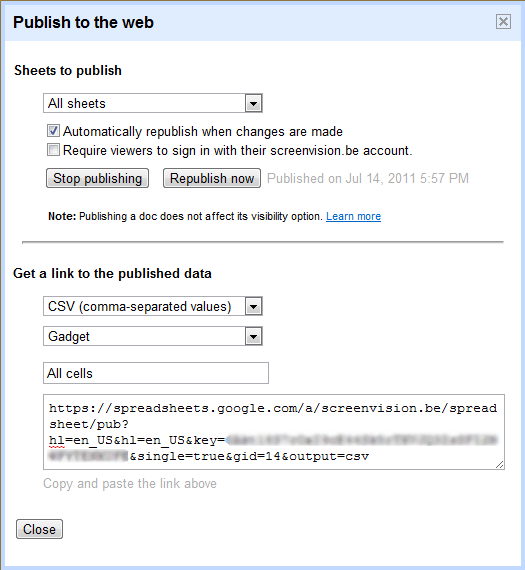Adsense: The long tail of spare change
26 Apr 2006Last year, Google took in about $2.7 billion through ads on other people’s sites, accounting for 44% of its ad revenues. Most of that money probably came through big sites, but a decent portion must have come from the little guys. When you add up all the under-$100 AdSense balances earned by the Scott Karps of the world, the total must be a pretty impressive number. That’s free working capital for Google, or it can invest the stash and make even more money. It’s a devilishly good idea.
roughtype.com via kingsley2.com and google.blognewschannel.com
Nicholas Carr then goes on clarifying that if you have more than $10 on your account, and you officially terminate your Adsense account, Google will send you the money anyway. In any case, there are thousands of Adsense accounts with sleeping money that cannot be touched until they break the $100 barrier.
BUSINESSMODEL?
Let’s see, thousands of small $ amounts that are blocked, that still represents tens (hundreds?) of thousands of dollars. Let’s see if we can come up with a business model to recover some of that money without breaking the Adsense Terms of Service.
Goal: fill the bucket, i.e. reach the $100 mark and then leave.
1. hire a big hose
Let’s say there is a site XYZ that has a fair amount of traffic. They accept to post other’s people’s Adsense code on (some of) their pages. Publisher PoorJoe has an Adsense balance of $25. He removes the ads from his own site and hands over his Adsense account/password to XYZ – who changes the password and payout info. They include it in their own pages where the money comes in faster:
- Impressions: 10.000/day instead of 100 – because the site is more popular
- CTR (Click-thorugh-rate): 1% instead of .2% (fictional numbers) – because the layout/placement of the ads is better
- CPM (Cost-per-mille): $3 instead of $.3 (fictional numbers) because the page content is more ‘relevant’
4 days later, the treshold of $100 is reached. The account is closed, Google pays $100 to company XYZ. $75 was generated purely by XYZ, the $25 that was already on the account is evenly split between XYZ and PoorJoe. XYZ made $87.5 instead of $75, and PoorJoe can recover half of his blocked money.
The Adsense Terms do not permit this scenario:
- Combination of 2 different Adsense accounts on 1 page (work-around: XYZ could use PoorJoe’s ads on some of their pages and then as only advertiser)
- You shall not display any Ad Unit on a page that contains Ads associated with another Google AdSense customer (e.g., Your Web hosting company), unless authorized to do so by Google
- Display on other website
- shall only be displayed in connection with the Site(s), each of which is subject to review and approval by Google in its discretion at any time
2. filling one bucket at a time
PoorJoe hands over his Adsense details to agency ABC and replaces his Adsense HTML code by some ABC code. ABC manages several thousands of these accounts. They take the one that is closest to $100, and -through their syndicated HTML code- use that account to display ads on ALL participating sites. The money comes in a bit faster:
- Impressions: 10.000/day instead of 100 – because the site is more popular
- CTR (Click-thorugh-rate): about the same so probably not too promising
- CPM (Cost-per-mille): the same (or worse because of the mix of topics and languages)
But most importantly: instead of filling $1000 accounts at 10 cents/day, the reate is now $100/day for 1 bucket. Each time an account reaches $100, ABC closes the account and receives the money. They then distribute it amongst their participants. When PoorJoe’s account is terminated, he is paid $25. ABC might take a commission, but they just earned $75, that they don’t have to pay to anyone yet. They can live off ‘the float’.
The Adsense Terms violations are not looking too good either:
- Display on other website
- This is already a technical challenge: can you give everyone a piece of JavaScript code from the ABC servers that will in turn show a Google Adsense (Javascript) ad? Some AJAX magic?
- shall only be displayed in connection with the Site(s), each of which is subject to review and approval by Google in its discretion at any time
CONCLUSION
The idea of making money the long-tail way from a Google system that is making money the long-tail way is tempting. But the Adsense Terms-of-Service, certainly combined with the trust issue “Why should I give my Adsense account to company XYZ/ABC?” make it not viable for the moment. Google has no interest in making it easier to accomplish.

